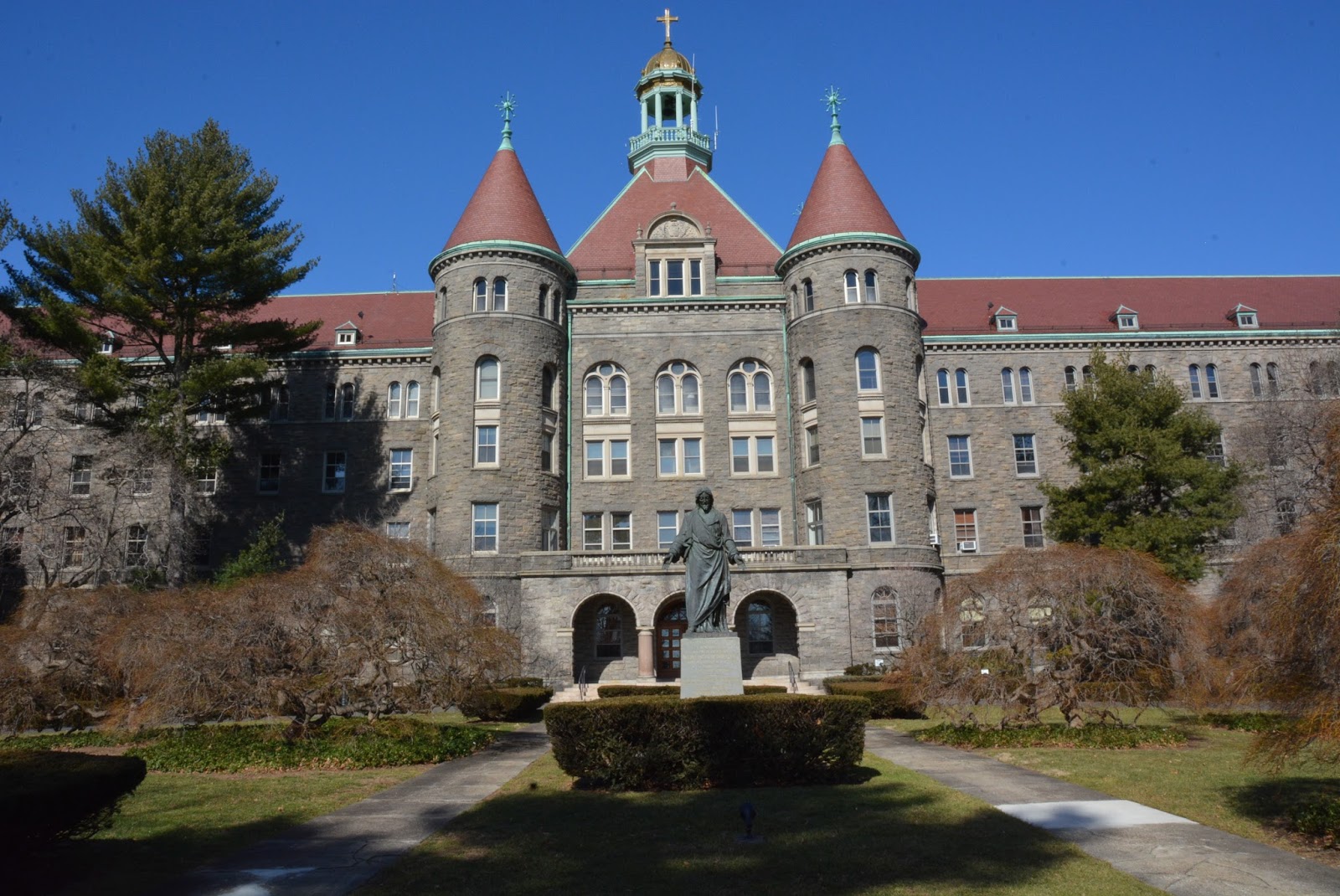Seminaries

I have wanted to write about seminaries for a long time, but there always seems to be something else. Then this week, NCR announced a series to answer these questions: “How are priests being formed? Who is teaching them? How are seminaries adapting to the new wave of abuse crises and condemnation of clericalism from the papacy?”
Broad questions, it is true, and important ones. The non-resident theologian of SEPA WOC, Marian Ronan, has reminded me, however, that “the growing reality of the RC clergy in the US [is that they have] come here from other countries.” So seminary education here will not apply to them – but perhaps continuing education for the active clergy will, one of the suggestions in the AUSCP document discussed below.

Back to reality. What piqued my initial interest in this topic was an exchange in the Philadelphia Inquirer last October. Thomas V. Berg, the rector of the New York seminary, probably did not choose the big photo of Cardinal McCarrick that accompanied his op-ed, first published in the Washington Post, but he did put the question of seminary education in the context of the sex abuse scandal. I thought it was a sensitive article, with concern about isolation and six recommendations for change that surprised me: less emphasis on academics and more on emotional maturity; a culture of trust and transparency; a minimum age for beginning priestly formation (I know that years ago women’s religious orders wanted a college education first); real mentors (not necessarily the skill set of theologians) on faculty; and closing failing seminaries, especially the very small ones. WOW.
A response from Timothy Senior, the rector at Philadelphia’s seminary, was published the following week, and said that what they are doing “aligns greatly” with the six points. [I can’t find his letter online.] “Who am I to judge?” is all I can say without independent evaluation of what is happening there, which is why I anticipate the NCR series. This letter seems constrained in the light of Berg’s book.
WHAT? I say to people who ask that I read articles, not books. To find out about Berg, I checked his bio on the seminary web site, and I noticed that he had been in and out of the Legionaries of Christ, dates 1986 to 2009. I wondered if the scandal surrounding the founder, Marcial Maciel, might have had something to do with it. So I bought Berg’s book, “Hurting in the Church,” on Kindle and read the moving chapter, “My Story.” The various recommendations in the article parallel his experience around this scandal, especially the attempt to keep those in formation in the dark about Maciel. I don’t have space or desire to rehash that whole event, but I find this book another example of the truth that those who have experienced trauma understand at an emotional level that those who have not cannot approach. I skimmed the book and it includes several stories, most about women, of those who have been abused, and ways to remain in the church after such experiences. How surprising that I would recommend a book published by Our Sunday Visitor.
Well, back to seminaries. A year ago, the Association of US Catholic Priests sent to the US bishops their recommendations for the upcoming revision to the Program of Priestly Formation, which was mandated by the Vatican. Most of the authors were ordained in the 1960s (just one in 1973 and one in 1984) so I wondered how current their understanding is, though I appreciated how transparent they were about their own backgrounds and experience. I can’t find a new USCCB document online, so I imagine that other priorities have absorbed the bishops.
The AUSCP document is also valuable. “Faithfulness to Vatican II; Call to Service; A Pastoral Model of Priestly Formation; Psychosexual Development and Celibacy; Discernment Processes and Faculty Formation” are its “overriding concerns.” The recommendations are similar enough to Berg’s that I thought he might have been drawing on it. One area of difference is their emphasis on sexuality education in general, not just in the context of celibate priests, and on experience of working with the laity, especially women.
Which brings me to the first NCR article. What’s the photo here? A Jesuit classroom with three women in the foreground. Peter Feuerherd notes that Jesuits are only 18% of the graduate student population, which includes many women. Feuerherd goes to some lengths to describe how Boston College is and is not a seminary, but the point I want to highlight is that some 65 Jesuits are studying in a place that emphasizes diversity of viewpoints as well as persons. Clerical garb is not worn.
So how is all this relevant for WOC? It’s walking with women called to suggest that theological education is better when women are included, so they should seek it out at Catholic as well as non-Catholic institutions. It’s to check out the online Global Ministries University, designed for those seeking ordination. It’s to note WOC’s Lucile Murray Durkin Scholarship for Women Discerning a Priestly Vocation; the deadline for applications is April 29.
Seminary education is not only for them; it’s for us. We need to think seriously about it.

7 Responses
We have to keep pushing for the ordination of women. We are running out of wine, and new wineskins need new wine. Mary, Mother of the Apostles, points the way. Now we need the best wine, of the “male and female” harvest, in apostolic succession. Cf. John 2:1-12
I appreciate your thoughtful, analytical article. I have several RC male priests who didn’t go to seminary until after college and they are significantly different than most priests: comfortable in their own skin, comfortable with their sexuality and comfortable with and not threatened by women.
Very good, informative post! I have never given priestly formation in the seminaries much thought, except when an arrogant, immature rookie was sent to a former parish of mine some years ago. The guidelines are interesting, as was the info about TV Berg. Thanks!
Having lived, worked and studied in at least four Catholic seminaries, I believe the selection and formation of future priests much change in a more forward time direction. Specifically, the typical psychological, academic and spiritual backgrounds of applicants must be evaluated. They should be mature individuals and have a practical experience in the working world and family life. Seminarians should live outside the seminary culture in real life communities and not in the sterile communities of typical seminaries. Formation should be at meetings in the evening or weekends, quarterly weekend retreats and study in graduate schools of theology. Seminarians should work part time during their formation and take out student loans to pay their way.
The current system protects them from real life situations and makes them dependent of the isolation culture that is currently dysfunctional.
That’s just the beginning. Much more to say.
Yes, well said, Regina, as with all your writing.
I think we could well set up a conversation on this that would result in a brief position paper for widespread circulation. Several salient issues:
1. what happens to women who study in settings where men will get paid employment automatically and they will not
2. consequences of parochial theological education when the trend is now toward inter-religious preparation for ministry
3. importance of declericalizing theological education as a part of decelericalizing the church
Best wishes and gratitude, Mary E. Hunt
Why does no one address the possibility that priest would be more rounded if they were allowed to marry. I want to see a Catholic Church with women priests as well as married priests. Is there a group advocating this? Thanks
There have been several groups. SPFM, Society of Priests for a Free Ministry started in 1968, changed its name to Fellowship of Christian Ministries, now Federation of Christian Ministries, CORPUS, Corp of Reserved Priests United States started in 1974, Women’s Ordination Conference started in 1975, Celibacy is the Issue (aki Rent-a-Priest), and Future Church all have advocated for an inclusive priesthood for all these years. It’s hard to change tradition.